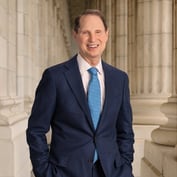Sales of employer-owned life insurance are on the rebound.
That’s the word from financial advisors, who report enjoying a significant rise in demand for the products to meet a range of business planning needs.
“We’re seeing a 50%-plus increase in sales of new EOLI-funded plans and a revisiting of existing plans funded with mutual funds,” says Michael Nolan, president and CEO of Nolan Financial, Chevy Chase, Md. “Since the equity markets recovered, companies are looking at employer-owned life insurance as a more tax-efficient way to fund the arrangements.”
Budd Schiff, a chief executive officer at NYLEX Benefits, Stamford, Conn., agrees.
“The trend line suggests that sales [for EOLI-funded plans] will remain strong through 2010,” he says. “This year, we’re on track to sell between $30 and $50 million in EOLI plans to our target market, mid-size and large businesses. In 2008, we did only $20 million in EOLI sales.”
Fueling the resurgent sales is a much improved business environment, as reflected in companies’ increased cash reserves and confidence about the economic outlook, sources say. That’s a marked change since the recession, when financially distressed firms restricted cash flow to meeting only critical operational needs and minimizing the impact to the bottom line.
Another factor contributing to rising sales is uncertainty about the estate tax, according to Richard Olewnik, a chartered financial consultant and assistant vice president at AXA Equitable, New York. Under the Economic Growth and Tax Relief Reconciliation Act of 2001, the estate tax is ending in 2010 but would reappear in 2011 with an applicable exclusion amount of only $1 million, unless Congress acts before then.
“Due to the lack of clarity about the estate tax, many advisors have sharpened their focus on meeting non-estate-related business planning needs,” says Olewnik. “For a second group of advisors, the uncertainty has availed them of opportunities to broach with business owners the potential impact of the estate tax’s reintroduction.”
Upshot: advisors are seeing an increased leveraging of EOLI to fund buy-sell agreements that provide for the purchase of an owner’s interest in a firm; key person insurance to compensate a business for financial losses arising from the death or extended incapacity of an executive; plus employee retirement and medical benefits.
Why use EOLI? The short answer is the vehicle’s tax-favored treatment. Cash values of permanent life insurance contracts grow tax-deferred. Policy loans and withdrawals can be made without penalty. And death benefit proceeds are distributed income tax-free to the extent they don’t exceed premium contributions.
Experts say those tax advantages are especially attractive to business owners who are looking to recruit, reward and retain top management with non-qualified deferred compensation plans, the largest market for EOLI sales. The chief vehicles for such arrangements are 401(k)-like deferral plans that set aside a portion of the employee’s salary (usually up to 25%) and bonuses (as much as 100%); and supplemental executive retirement plans (SERPs), which mirror defined benefit pension plans by promising a stated benefit at retirement.
A business buys a life insurance plan on directors and executives to be compensated, funding the premiums on the purchased policies. As each executive retires, the firm pays benefits from operating assets for a previously established period. At the executive’s death, the firm, being the sole beneficiary of the insurance proceeds, is reimbursed for some or all of the plan costs.
While sources attest to a rise in demand for EOLI-funded executive comp plans since the recession, industry data indicates the market for non-qualified deferred comp plans has yet to recover to pre-recession levels. A survey from Clark Consulting, Dallas, shows the prevalence of NQDC plans among retailers declining to 85% in 2009, from 95% in 2007. A smaller percentage (67%) of responding companies reported having SERPs, similar to their prevalence in 2007.
Paradoxically, a greater share of respondents–71%–say they informally fund their NQDC plans, up from 62% in 2007 and the highest level since 2001. Most of these firms are funding with employer- or trust-owned life insurance: The percentages for NQDC and SERPs are 61% and 68%, respectively.
“[Executives] are looking for ways to save for retirement above and beyond what they can save in a qualified plan, such as a 401(k),” says Scott Richardson, a business and estate planning specialist at Effner Financial Group, Downers Grove, Ill., which is affiliated with Northwestern Mutual Financial Network. “A non-qualified deferral plan, informally funded with EOLI, is an efficient way to offer that.”








 June 06, 2010 at 08:00 PM
June 06, 2010 at 08:00 PM











